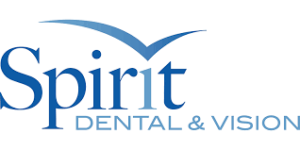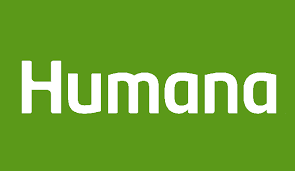Dental Vision Insurance: The Two-In-One Guide to Individual Coverage
Understanding Dental and Vision Insurance
Dental and vision insurance are types of health insurance that cover specific aspects of care related to oral and eye health, respectively. These insurances help individuals budget for and manage the costs of maintaining good dental and vision health.
Dental Insurance
Dental insurance typically helps cover the costs related to dental care, including preventive services like cleanings and exams, as well as more extensive procedures such as fillings, crowns, and sometimes orthodontics.
Most dental plans follow a 100/80/50 coverage structure, meaning they cover 100% of preventive care, 80% of basic procedures, and 50% of major procedures. However, not all procedures are covered; cosmetic procedures like teeth whitening are usually not included.
Dental insurance plans can be obtained through employers, purchased as standalone policies, or acquired through Medicare Advantage plans. When comparing dental insurance plans, it’s important to understand terms such as deductibles, copays, coinsurance, and annual maximums, as these will affect out-of-pocket costs.
Vision Insurance
Vision insurance provides benefits that partially cover vision care, such as eye exams, glasses, and contact lenses. Coverage for children’s vision care is included in all plans in the Health Insurance Marketplace, but adult vision coverage may vary. Stand-alone vision plans can be purchased to reduce vision care expenses if not included in a health plan.
Vision insurance is mainly focused on routine eye care. It may not cover medical issues related to the eyes, such as vision loss or eye diseases, typically covered under regular health insurance.
Importance of Dental and Vision Insurance
Both dental and vision insurance are important because they focus on preventive care, which can help detect early signs of more serious health issues. Regular check-ups and cleanings are usually covered at 100%, encouraging individuals to maintain regular care and potentially avoid more costly and extensive procedures in the future. Additionally, dental and vision health is integral to overall health, and having insurance can lead to better health outcomes and financial savings.
Dental Insurance Coverage Types
Preferred Provider Organizations (PPO)
A PPO dental plan has a network of dentists that you can visit. The benefit of this plan is that you can see almost any dentist and still receive at least partial coverage. However, if you see a dentist in the network, you’ll save the most money.
Dental Health Maintenance Organizations (DHMO)/Capitation Plans
DHMOs offer prepaid dental care to members. You pay a monthly fee and then receive all of your dental care from the DHMO facility or independent dentists within the network. No benefits are provided if you seek care outside of this network.
Indemnity Plans
Also known as “traditional” insurance, indemnity plans pay claims based on the procedures performed, usually as a percentage of the charges. These plans allow you to choose your dentist, but they tend to cost more because they give you the freedom to choose any dentist.
Indemnity with PPO
With this type of plan, you typically have an annual deductible you must meet before your plan starts paying benefits. Then, you pay a percentage of the costs for the treatments you receive. You can visit any dentist, but your costs are lower when you use an in-network dentist.
Prepaid Plans (DHMO)
Prepaid dental plans, or Dental Health Maintenance Organizations (DHMOs), require you to pay a monthly fee and receive all your dental care from the DHMO facility or independent dentists within the network.
Vision Insurance Coverage Types
Traditional Vision Insurance
Traditional vision insurance works similarly to conventional health insurance. You’ll have a monthly or annual premium, and the plan will cover part of the cost for specific services, such as exams, glasses, and contact lenses.
Alternative Vision Insurance
Alternative vision insurance plans do not have a waiting period and no restrictions for individuals with preexisting conditions. These plans act as savings accounts to pay for vision procedures from a local network of providers.
Vision Benefits Package
A vision benefits package provides free eye care services and eyewear within fixed dollar amounts in return for an annual premium or membership fee.
Discount Vision Plan
A discount vision plan provides eye care and eyewear at discounted rates after you pay an annual premium or membership fee.
Dental Insurance Costs and Benefits
Dental insurance typically includes premiums, copays, coinsurance, deductibles, and annual maximums.
– **Premiums**: The monthly amount paid for insurance. A typical premium for a dental plan may range from $20–$50 per month for an individual or $50–$150 per month for a family.
– **Copays**: A fixed amount paid for specific covered services. Some dental plans waive copays for preventative care.
– **Coinsurance**: A percentage of the cost you pay for a dental procedure. For example, if your coinsurance is 20 percent, your dental plan will cover 80 percent of your dentist bill.
– **Deductibles**: The total amount you pay before your dental benefits carrier helps with the costs. You only have to pay your deductible once every plan year.
– **Annual Maximums**: An agreed-upon amount your dental insurance provider will pay in a year.
Dental insurance benefits typically include coverage for regular exams, cleanings, and specific procedures. A basic plan may cover cleaning, exams, fluoride treatment, and fillings. More comprehensive coverage may include oral surgery, implants, and root canals. The average costs of dental services without dental insurance can range from $75-$200 for basic cleaning and polish, $50-$250 for fillings, and $500-$2,000 for crowns.
Vision Insurance Costs and Benefits
Vision insurance also includes premiums, copays, coinsurance, and deductibles.
– **Premiums**: The monthly amount paid for insurance. The cost can vary depending on the plan and provider. The average premium for an adult is $19/month
– **Copays**: A fixed amount paid for specific covered services. Some vision insurance plans waive copays for preventative care.
– **Coinsurance**: A percentage of the cost for a vision procedure. The percentage can vary depending on the plan and provider.
– **Deductibles**: The total amount you pay before your vision benefits carrier helps with the costs. The amount can vary depending on the plan and provider.
Vision insurance benefits typically include coverage for regular exams, glasses, and contact lenses. Some plans may also cover surgeries considered cosmetic, such as LASIK. The cost of vision exams can range from $50 to $250—standard copays for vision insurance range from $10 to $20.
Similarities and Differences between Dental/Vision Insurance and Regular Health Insurance
Dental, vision and health insurance are all types of insurance that help cover the costs of medical care. However, they each cover different aspects of care and have unique characteristics.
Similarities
– **Premiums, Deductibles, and Copays**: All three types of insurance typically involve the payment of premiums, deductibles, and copays. Premiums are the regular payments made to keep the insurance policy active. Deductibles are the amounts the insured must pay out-of-pocket before the insurance coverage begins. Copays are fixed amounts that the insured pays for covered services.
– **Provider Networks**: Many health, dental, and vision insurance plans have networks of providers who have agreed to accept the insurance. Using these in-network providers can reduce costs for the insured.
– **Coverage for Preventive Care**: Health, dental, and vision insurance often cover preventive care. For health insurance, this might include annual physicals and screenings. For dental insurance, this could include cleanings and exams. For vision insurance, this might include regular eye exams.
Differences
– **Coverage Scope**: Health insurance typically covers a broad range of medical services, including doctor visits, hospital stays, and prescription medications. Dental insurance explicitly covers oral health care, such as cleanings, fillings, and orthodontics. Vision insurance covers eye care, including eye exams and corrective lenses.
– **Separate Policies**: While some health insurance plans may include dental or vision coverage, these are often separate. Dental and vision insurance can be purchased as standalone or supplemental coverage to a health insurance plan.
– **Essential Health Benefits**: Under the Affordable Care Act (ACA), dental coverage for children is considered an essential health benefit, meaning it must be available as part of a health plan or as a standalone plan. However, this requirement does not extend to adults. Similarly, all ACA-qualified health plans include vision coverage for children but not for adults.
– **Annual Maximums**: Dental insurance often has an annual maximum, the maximum amount the insurance company will pay for care during the plan year. This is less common with health insurance.
Choosing the Right Plan
Choosing the right dental and vision insurance plan requires careful consideration of several factors, including coverage, costs, and network restrictions. Here are some tips to help you make an informed decision:
Dental Insurance
**Assess Your Dental Care Needs**: Consider your past dental history and anticipate future needs. This could include routine check-ups, fillings, root canals, orthodontics, etc.
**Understand the Types of Dental Plans**: Dental Health Maintenance Organizations (DHMO) offer lower-cost coverage with a network of dental providers. Some services are covered 100%, while others may require a small copayment. Fee-for-service dental plans, or traditional or indemnity plans, don’t have provider networks and generally have higher premiums.
**Consider Costs**: Dental insurance involves premiums, deductibles, coinsurance, and copayments. Most plans also have an annual maximum allowance. An individual’s average premium for a dental plan may be $20–$50 per month.
**Check the Provider Network**: If you have a preferred dentist, ensure they are in-network for the plan you’re considering. Using in-network providers can help reduce costs.
**Review the Policy Coverage**: Carefully review what the policy covers. For example, a plan may cover exams, cleanings, X-rays, fillings, tooth removals, root canals, etc. Some services may not be covered or may only be partially covered.
Vision Insurance
**Evaluate Your Eye Care Needs**: Review your records to understand your past eye care services and anticipate future needs. This could include routine eye exams, prescription glasses, contact lenses, or surgeries.
**Consider Costs**: Vision plans vary in price. Look at the monthly premium and estimate your out-of-pocket expenses. Basic vision care plans range from $5 to $35 a month in premiums for an individual.
**Check the Provider Network**: Ensure your preferred eye care provider is in-network for the plan you’re considering. Using in-network providers can help reduce costs.
**Review the Policy Coverage**: Vision insurance often covers routine eye care expenses and can provide discounts for surgeries. However, not all vision plans are created equal, so it’s essential to understand what specific services and products are covered.
Common Misconceptions about Dental and Vision Insurance
Several misconceptions about dental and vision insurance can lead to confusion and potentially impact people’s decisions about their healthcare. Here are a few of the most common misconceptions:
**Dental and Vision Insurance Work the Same Way as Health Insurance**: While there are similarities, dental and vision insurance often work differently. For example, dental insurance usually has an annual maximum benefit, less common with health insurance. Vision insurance typically focuses on routine eye care and may not cover medical issues related to the eyes, typically covered under regular health insurance.
**All Dentists Accept Insurance**: Not all dentists accept all types of dental insurance. Some dentists may not be in-network for specific plans, which can affect the cost of care. It’s important to check with your dentist and insurance provider to understand what is covered.
**Dental and Vision Insurance Cover All Procedures**: Dental and vision insurance typically cover routine care and some procedures, but not all. For example, dental insurance usually does not cover cosmetic procedures like teeth whitening. Similarly, vision insurance may not cover all corrective lenses or surgeries.
**Dental and Vision Insurance Are Not Necessary**: Regular dental and vision check-ups are essential for overall health. Dental check-ups can help detect early signs of oral health issues and some systemic diseases. Regular eye exams can detect vision problems, eye diseases, and other health issues.
Impact of Dental and Vision Health on Overall Health
Regular dental and vision check-ups are crucial for maintaining overall health. They can help detect signs of serious health issues, allowing for early intervention and treatment.
Dental Health
Regular dental check-ups can help detect early signs of oral health issues such as gum disease and tooth decay. If left untreated, these conditions can lead to pain, tooth loss, and infection. Moreover, research has shown a link between oral health and systemic health. Conditions such as heart disease, diabetes, and certain types of cancer have been associated with oral health, highlighting the importance of regular dental care.
Vision Health
Regular eye exams can detect vision problems like nearsightedness, farsightedness, astigmatism, and eye diseases such as glaucoma and macular degeneration. Early detection and treatment of these conditions can help prevent vision loss. Eye exams can also detect signs of systemic diseases such as diabetes, high blood pressure, and multiple sclerosis, often before other symptoms appear.
Standalone Dental and Vision Insurance Providers

Ameritas
Ameritas provides individual dental and vision insurance plans under the PrimeStar® brand. These plans feature next-day coverage and no enrollment fees, with most plans having no waiting periods. Preventive visits, such as dental exams and cleanings, are covered up to 100%. Some dental plans also include additional benefits like orthodontia or hearing care. Ameritas emphasizes flexibility, allowing coverage to stay with you as your life changes, and you can cancel your insurance coverage anytime. The company prides itself on local support with all call centers located in the United States and offers translation services in many languages. Ameritas dental plans and vision plans are supplemental insurance options for Medicare and Marketplace health care plans, and all plans include prescription and hearing care savings programs at no additional cost.
The cost of Ameritas dental insurance plans can range between $21.81-$313.76 per month, depending on the level of coverage. Ameritas is rated A (Excellent) for financial strength and operating performance by A.M. Best Company, and it has a large network with more than 425,000 access points.
United healthcare dental and vision insurance.

United Healthcare Dental and Vision Insurance: A Comprehensive Approach
UnitedHealthcare’s dental insurance plans include basic coverage for general dental care and major dental care, such as dental implants. The plans are designed to cater to different needs, with options to choose from three basic dental insurance plans depending on cost, keeping your dentist, or flexibility. The dental insurance plans from UnitedHealthcare cost between $16.27 and $200.88 per month, depending on the level of coverage.
UnitedHealthcare offers four dental plan designs, with “Primary” plans having a lower maximum benefit (yearly payout cap), while “Premier” plans have a higher benefit that increases over time. The plans cover preventive care with no waiting period, and depending on the plan design, you pay a $25 copay or nothing. For Basic and Major Services, there’s a maximum of 3 individual $50 deductibles per family per calendar year.
UnitedHealthcare’s vision insurance plans offer various individual coverage options, including coverage for eye exams, contacts, glasses, and more. Vision insurance plans are available for people of all ages; most plans cover prescription eyewear. The vision insurance plans can help manage vision care costs by providing benefits covering routine expenses, like routine eye exams, glasses, or contact lenses.
Anthem Dental vision Insurance
 Anthem is a health insurance provider that offers a variety of dental insurance plans with different price points and out-of-pocket costs. Most of their plans cover 100% for exams, cleanings, and X-rays without a waiting period. Anthem’s dental insurance plans typically use a 100/80/50 coinsurance structure, which means they cover 100% of preventive care, including cleanings, exams, and X-rays, 80% for basic procedures, such as fillings, and 50% of major procedures, such as crowns, and dentures.
Anthem is a health insurance provider that offers a variety of dental insurance plans with different price points and out-of-pocket costs. Most of their plans cover 100% for exams, cleanings, and X-rays without a waiting period. Anthem’s dental insurance plans typically use a 100/80/50 coinsurance structure, which means they cover 100% of preventive care, including cleanings, exams, and X-rays, 80% for basic procedures, such as fillings, and 50% of major procedures, such as crowns, and dentures.
Anthem also provides vision insurance, with most of their Medicare Advantage plans including built-in coverage for routine dental and vision care. They offer various options to meet different needs and budgets, with the average monthly premium for their standard dental and vision coverage being $22 in 2023 and $23 effective from 1/1/24. Anthem’s vision coverage includes a $200 reimbursement allowance toward the purchase of eyewear, which applies to corrective (prescription) glasses, lenses, and frames.
Guardian Life
 Guardian Life offers comprehensive dental insurance plans designed by listening to what members actually want. Their dental plans cover routine oral exams, cleanings, and X-rays, with no waiting period for preventive and basic care. Major care, such as crowns, complex extractions, oral surgery, and more, as well as implants, dentures, and orthodontia for members under age 19, are covered at 50% after a 12-month waiting period.
Guardian Life offers comprehensive dental insurance plans designed by listening to what members actually want. Their dental plans cover routine oral exams, cleanings, and X-rays, with no waiting period for preventive and basic care. Major care, such as crowns, complex extractions, oral surgery, and more, as well as implants, dentures, and orthodontia for members under age 19, are covered at 50% after a 12-month waiting period.
Guardian Life also provides vision insurance plans powered by VSP. These plans include an annual Well Vision Exam® in every plan for just a $15 copay. One pair of glasses or contacts are covered up to the plan allowance each year after a $25 copay. Members even save 20% on an additional pair of glasses and see a typical annual savings of over $200. Individual vision plans start at $10 per month.
Spirit Dental
 Spirit Dental, a product offered by Ameritas Life Insurance Corp., allows three dental cleanings and two yearly exams. They offer major services dental insurance for major dental services, and their plans are designed to be flexible, with no waiting periods for covered dental treatments. Spirit Dental plans include a one-time $100 deductible and high annual maximums ranging from $1,200 to $5,000. Monthly premiums for individual plans might range from $36 to $70, based on factors such as location and the selected plan.
Spirit Dental, a product offered by Ameritas Life Insurance Corp., allows three dental cleanings and two yearly exams. They offer major services dental insurance for major dental services, and their plans are designed to be flexible, with no waiting periods for covered dental treatments. Spirit Dental plans include a one-time $100 deductible and high annual maximums ranging from $1,200 to $5,000. Monthly premiums for individual plans might range from $36 to $70, based on factors such as location and the selected plan.
Spirit Dental also offers Flex plans exclusive to Spirit and doesn’t follow the normal PPO/HMO guidelines. These plans provide coverage but don’t limit you to a network or selection of dentists. For example, the Spirit Dental Core Network plan covers up to $1,200 per year and has no waiting period for covered dental treatments.
MetLife dental vision insurance
 MetLife offers comprehensive dental and vision insurance plans. Their dental insurance plans are designed to minimize out-of-pocket costs for routine dental check-ups and expensive procedures. They emphasize the importance of routine visits to the dentist to prevent costly dental bills later on and to address problems linked to medical conditions like diabetes or heart disease. MetLife dental insurance plans provide benefits for a broad range of covered services/procedures, giving you the flexibility to choose any licensed dentist, in or out-of-network.
MetLife offers comprehensive dental and vision insurance plans. Their dental insurance plans are designed to minimize out-of-pocket costs for routine dental check-ups and expensive procedures. They emphasize the importance of routine visits to the dentist to prevent costly dental bills later on and to address problems linked to medical conditions like diabetes or heart disease. MetLife dental insurance plans provide benefits for a broad range of covered services/procedures, giving you the flexibility to choose any licensed dentist, in or out-of-network.
MetLife’s vision insurance covers eye conditions, diseases, and problems like glaucoma and cataracts. Their vision provider networks include thousands of professionally certified optometrists and ophthalmologists, and members can choose from in- and out-of-network vision providers. Coverage includes eye exams, frames, lenses, and lens enhancements, and members also gain access to a discount on LASIK.
Humana
 Humana offers dental, vision, and hearing insurance plans. Their dental insurance plans are designed to fit various needs, with budget-friendly monthly premiums and low office-visit copays. Humana’s dental plans provide immediate discounts on dental care plus other services, such as vision, prescription, hearing, and alternative medicine. They also offer plans like the Humana Extend 1250 and 5000, which provide comprehensive dental, vision, and hearing health coverage.
Humana offers dental, vision, and hearing insurance plans. Their dental insurance plans are designed to fit various needs, with budget-friendly monthly premiums and low office-visit copays. Humana’s dental plans provide immediate discounts on dental care plus other services, such as vision, prescription, hearing, and alternative medicine. They also offer plans like the Humana Extend 1250 and 5000, which provide comprehensive dental, vision, and hearing health coverage.
Humana’s vision insurance plans are designed to cover costs for routine eye exams, glasses, contacts, and more. They emphasize the importance of maintaining vision health and spotting problems early. Humana’s vision insurance plans offer a variety of brands and lens options, and members can find frames that fit their style and budget.
What's the best vision insurance?
According to Forbes and USA Today, Anthem is the best overall vision insurance provider, while UnitedHealthcare is recognized for offering the best low-cost vision plan. EyeMed is noted for its generous frame and contacts allowance and is recommended for those who wear glasses. Humana offers a $150 allowance for contact lens wearers, making it a good choice.
Who has the best dental insurance?
According to MarketWatch and USA Today, the best dental insurance providers are Anthem and Guardian. Anthem's Essential Choice PPO Platinum plan is particularly recommended. These providers are recognized for their comprehensive coverage and competitive pricing. However, the best dental insurance for an individual will depend on their needs, health status, and budget.
What is the difference between a vision plan and vision insurance?
Vision benefits plans and discount vision plans are the two primary types of coverage people can purchase for vision care. Vision benefits plans are types of insurance, while discount vision plans provide discounts for the same products and services. Vision benefits plans require monthly premiums for coverage, including annual eye exams, frames, lenses, and/or contacts. On the other hand, discount vision plans offer reduced prices on these services without needing a monthly premium.
What is the most common type of dental insurance?
The most common type of dental insurance is the Preferred Provider Organizations (PPO) plan. PPO plans contract with a network of preferred providers, and insurance companies share a portion of the reduced fee, which means members will have lower out-of-pocket costs when receiving treatment from an in-network provider.
How much is vision insurance in Texas per month?
The cost of vision insurance can vary based on the specific plan and provider. However, according to Forbes, some of the cheapest vision insurance policies, such as EyeMed Healthy, UnitedHealthcare’s Plan A, and Anthem’s Blue View Vision Value, range from $5 to $12 per month. Getting a quote from the insurance provider based on your specific needs and location is recommended for a more accurate estimate.
How much is vision insurance monthly?
The average monthly cost of vision insurance can vary greatly depending on the plan and provider. As mentioned, some of the cheapest vision insurance policies range from $5 to $12 monthly. However, more comprehensive plans or those with lower out-of-pocket costs may have higher premiums. Getting a quote from the insurance provider for the most accurate estimate based on your specific needs is best.

Blake Nwosu
Owner & Principal Agent
Expertise: All personal and commercial line insurance, including auto, home, business, health, and life insurance.
License: 16117464
Blake Insurance Group
Phone: (888) 387-3687
Email: info@blakeinsurancegroup.com
Hours: Mon-Fri 9:00 am to 5:00 pm
Sat-Sun: Closed

